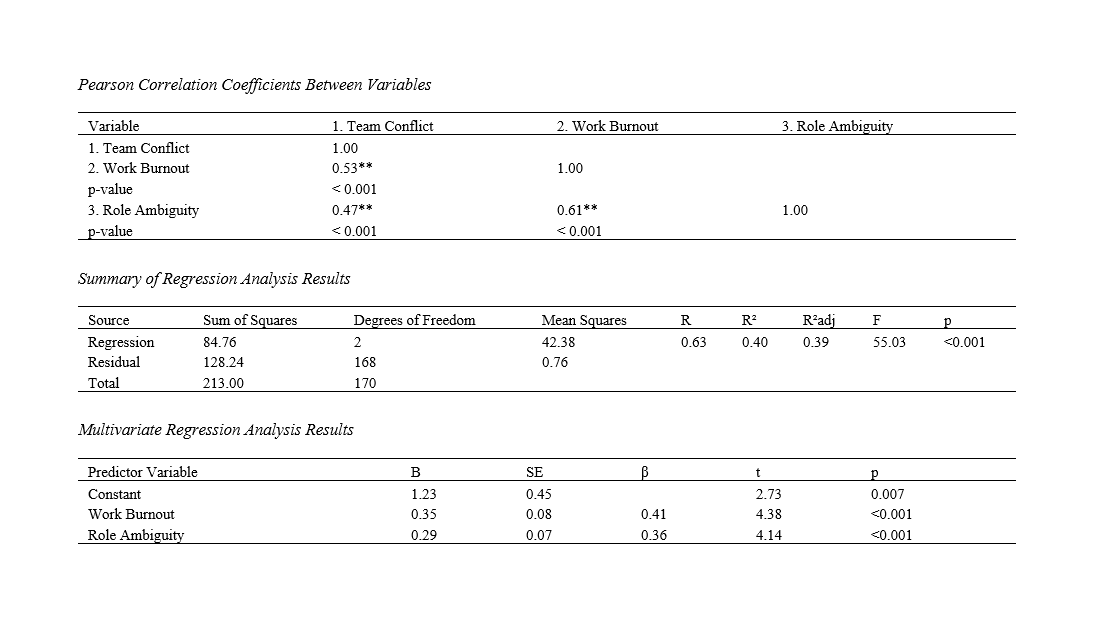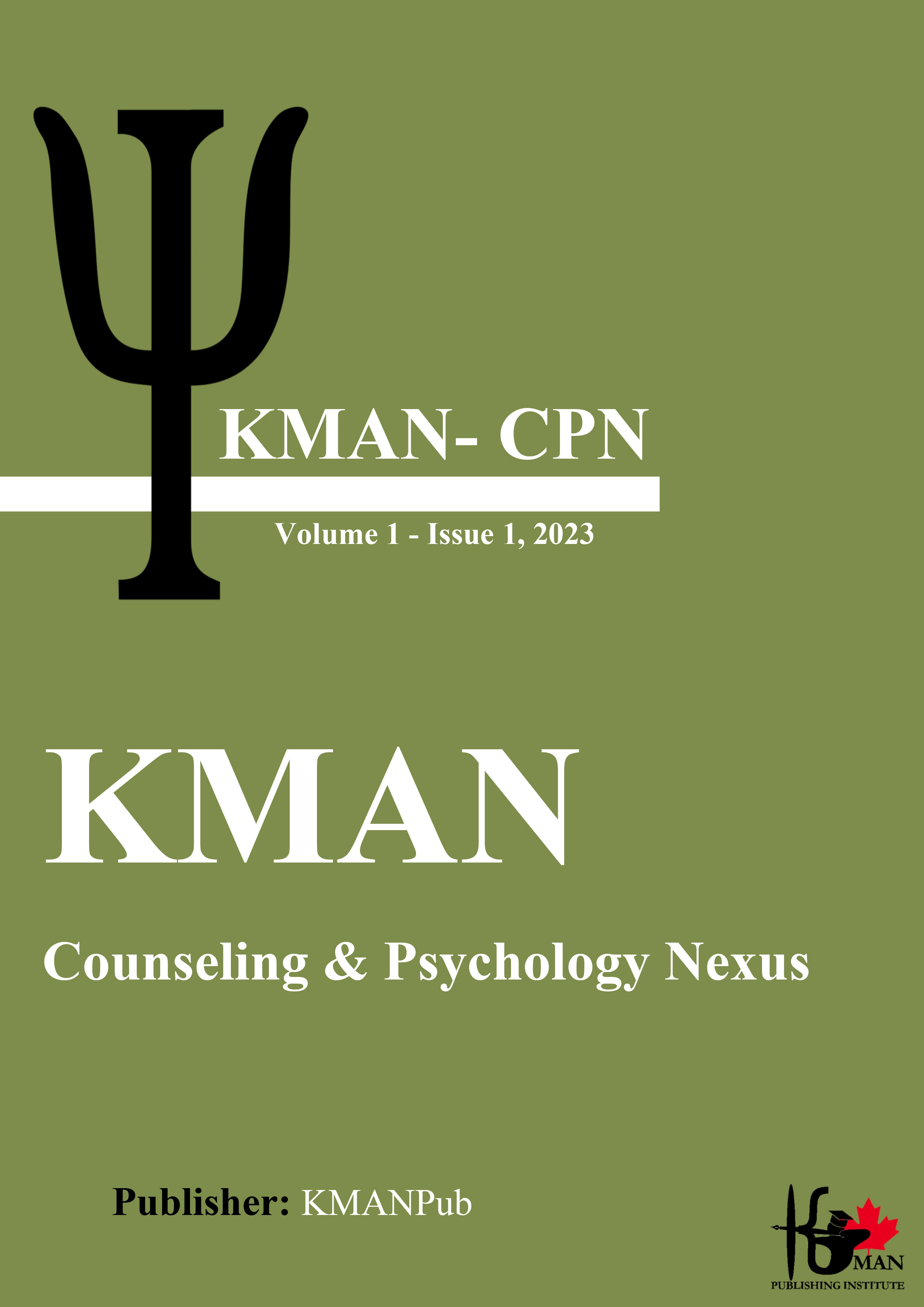Understanding Team Conflict: The Contributions of Work Burnout and Role Ambiguity
Keywords:
Team Conflict, Work Burnout, Role Ambiguity, Organizational Behavior, Cross-Sectional Study, Stress ManagementAbstract
The objective of this study was to investigate the relationships between team conflict, work burnout, and role ambiguity in organizational settings. Specifically, it aimed to determine how work burnout and role ambiguity contribute to team conflict. This cross-sectional study involved 171 participants from various organizational settings. The sample size was determined using the Morgan and Krejcie table. Data were collected through structured questionnaires measuring team conflict, work burnout, and role ambiguity. Pearson correlation analysis was conducted to explore the relationships between variables, while linear regression analysis was used to assess the predictive power of work burnout and role ambiguity on team conflict. All data analyses were performed using SPSS version 27. Descriptive statistics revealed moderate levels of team conflict (M = 3.45, SD = 0.89), high levels of work burnout (M = 4.12, SD = 1.01), and moderate to high levels of role ambiguity (M = 3.87, SD = 0.94). Pearson correlation results indicated significant positive relationships between team conflict and work burnout (r = 0.53, p < 0.001), and between team conflict and role ambiguity (r = 0.47, p < 0.001). Regression analysis showed that work burnout and role ambiguity significantly predicted team conflict, explaining 40% of the variance (R² = 0.40, F(2, 168) = 55.03, p < 0.001). Both work burnout (B = 0.35, p < 0.001) and role ambiguity (B = 0.29, p < 0.001) were significant predictors. The study highlights the significant impact of work burnout and role ambiguity on team conflict within organizations. Addressing these factors through clear role definitions and comprehensive stress management programs can help mitigate team conflict and improve organizational effectiveness. Future research should explore these relationships longitudinally and consider additional moderating variables.
Downloads

Downloads
Additional Files
Published
Submitted
Revised
Accepted
Issue
Section
Categories
License
Copyright (c) 2025 Yoko Wong (Author); Xian Seng Neo (Corresponding Author)

This work is licensed under a Creative Commons Attribution-NonCommercial 4.0 International License.







